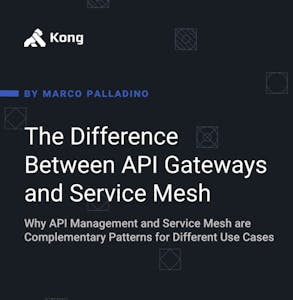We all know that what customers see in the market is, in fact, only a small percent of the shifts happening within our organizations.
Recently, Time Magazine stated that "Every Company is a Tech Company… The Disruption is Just Beginning." We're seeing it in the way we wait in lines, find places to stay when traveling and work from anywhere. The disruption is distribution, and it impacts how we live and build applications.
Distribution shaping our lives
- Distributed short-term rentals across the world, rather than within a monolithic hotel
- Distributed ordering and queuing on mobile apps, rather than in monolithic lines
- Distributed employees working from home, rather than together in a monolithic office
Distribution shaping our applications
- Distributed applications across multiple clouds, rather than within a monolithic data center
- Distributed applications services that allow us to cut the line to get to market, rather than waiting for all components to be updated and released as a monolith
- Distributed automated application pipelines, rather than applying monolithic policies before deployment

Two-thirds of organizations are currently going through the move to distribute their application architectures along with adopting new business models.
But moving from a monolithic model to a distributed model is hard, whether we're talking about your application architecture or your workforce office location. Moving, in general, is hard.
Here comes the analogy that I'm sure you were waiting for…
In some ways, moving from monolithic architecture to a distributed one is similar to how people used to relocate for job opportunities. There's the stress of doing it quickly to keep from paying for two places at once, complicated logistics of renting a truck or hiring a moving company, and then all those boxes.
There would be so much less stress around the whole thing if you could move a room at a time or move across the country as if your new house is down the street. It would mean that you could start with the essentials from your bedroom and go to the attic stuff last. You also wouldn't have that urgency of the moving truck in the driveway.
Like moving homes, applications require the logistics of figuring out what services will go in which containers. Unlike moving homes, you CAN make the move feel like it's next door - removing the need for the moving truck.
In this analogy, the lack of connectivity between your old monolithic application and new distributed services is the moving truck that's forcing you to move all at once.

Enter Kong Konnect
Kong Konnect provides connectivity between monolith and microservices through API gateway and service mesh functionality (to learn the difference, look here). The platform is then able to pull your container and VM-based applications, deployed across multi-cloud and hybrid cloud environments, together to be virtual neighbors. Learn more about how Kong has helped a leading technology company, MS3, support both VMs and Kubernetes workloads with a single solution and migrate their applications without forklift upgrades.
Now that all of your applications and services are able to talk to each other and be centrally managed, you can:
- Continue realizing returns on legacy application investments by allowing cloud native applications to consume services from legacy applications.
- Migrate applications pragmatically and at your own pace, based on need and value to the business.
- Reassemble and reuse services, as needed, to build new applications. This allows you to ultimately move budget from maintaining applications to innovation.
WEBINAR: Extending Service Mesh to VMs
Join us July 27 at 9am Pacific Time for a webinar where Cody De Arkland, Technical Marketing Engineer at Kong Inc, walks us through how to deploy Kuma and Kong Mesh into a multi-zone deployment supporting Kubernetes workloads as well as Virtual Machine workloads. He will share how service mesh allows developers and operators to create a consistent, policy driven approach to application connectivity in a multi-cloud world.






